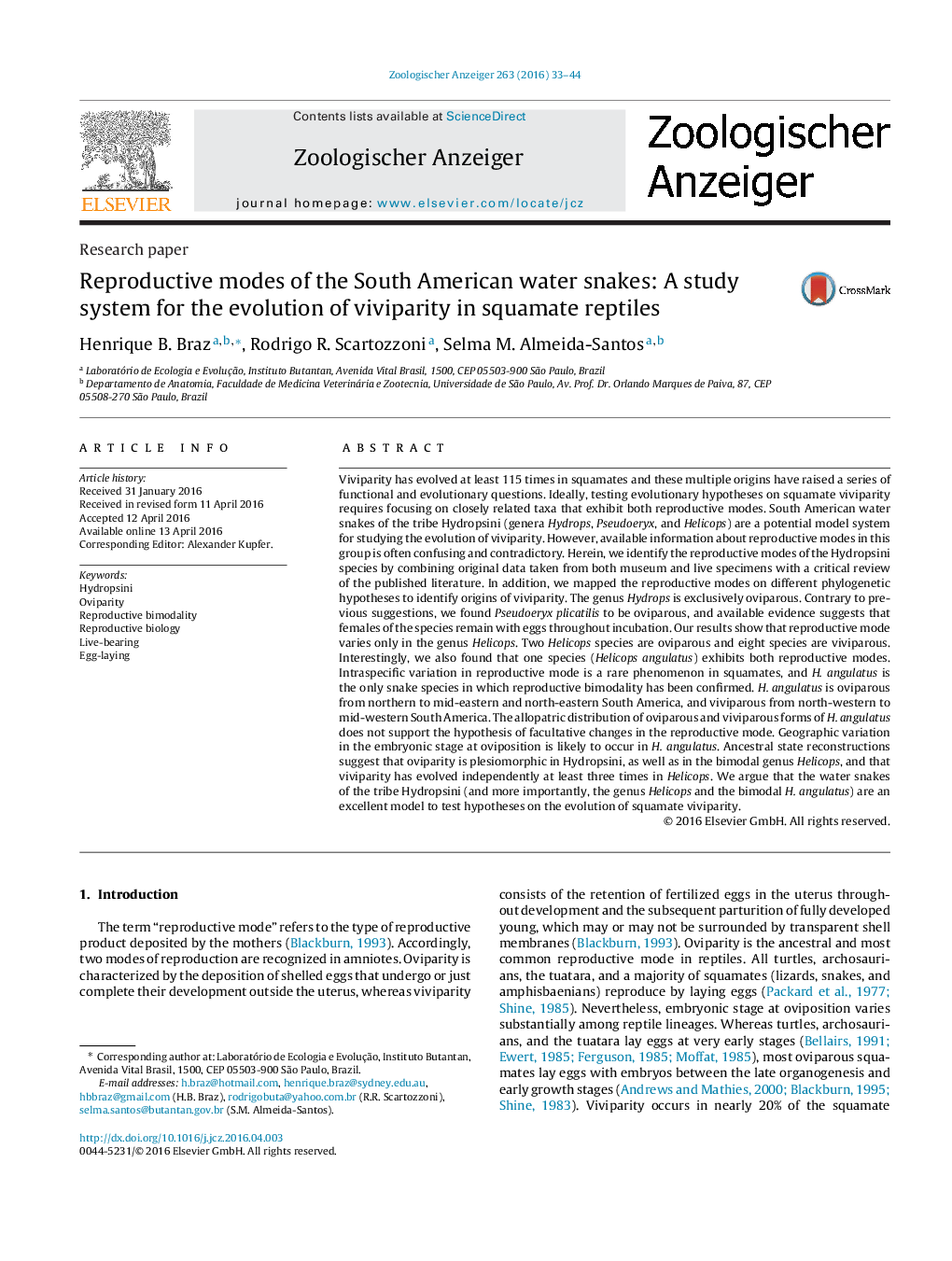| Article ID | Journal | Published Year | Pages | File Type |
|---|---|---|---|---|
| 2790453 | Zoologischer Anzeiger - A Journal of Comparative Zoology | 2016 | 12 Pages |
Viviparity has evolved at least 115 times in squamates and these multiple origins have raised a series of functional and evolutionary questions. Ideally, testing evolutionary hypotheses on squamate viviparity requires focusing on closely related taxa that exhibit both reproductive modes. South American water snakes of the tribe Hydropsini (genera Hydrops, Pseudoeryx, and Helicops) are a potential model system for studying the evolution of viviparity. However, available information about reproductive modes in this group is often confusing and contradictory. Herein, we identify the reproductive modes of the Hydropsini species by combining original data taken from both museum and live specimens with a critical review of the published literature. In addition, we mapped the reproductive modes on different phylogenetic hypotheses to identify origins of viviparity. The genus Hydrops is exclusively oviparous. Contrary to previous suggestions, we found Pseudoeryx plicatilis to be oviparous, and available evidence suggests that females of the species remain with eggs throughout incubation. Our results show that reproductive mode varies only in the genus Helicops. Two Helicops species are oviparous and eight species are viviparous. Interestingly, we also found that one species (Helicops angulatus) exhibits both reproductive modes. Intraspecific variation in reproductive mode is a rare phenomenon in squamates, and H. angulatus is the only snake species in which reproductive bimodality has been confirmed. H. angulatus is oviparous from northern to mid-eastern and north-eastern South America, and viviparous from north-western to mid-western South America. The allopatric distribution of oviparous and viviparous forms of H. angulatus does not support the hypothesis of facultative changes in the reproductive mode. Geographic variation in the embryonic stage at oviposition is likely to occur in H. angulatus. Ancestral state reconstructions suggest that oviparity is plesiomorphic in Hydropsini, as well as in the bimodal genus Helicops, and that viviparity has evolved independently at least three times in Helicops. We argue that the water snakes of the tribe Hydropsini (and more importantly, the genus Helicops and the bimodal H. angulatus) are an excellent model to test hypotheses on the evolution of squamate viviparity.
